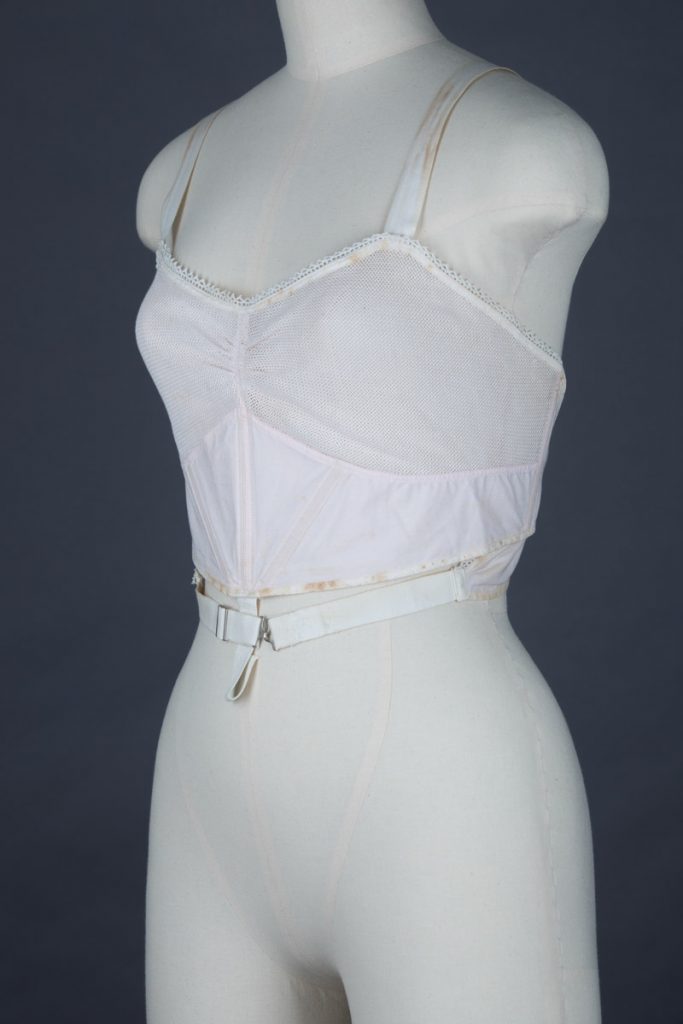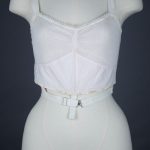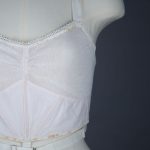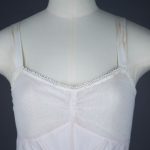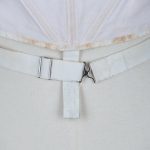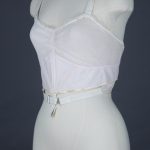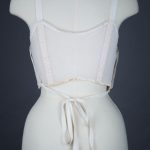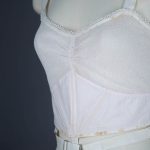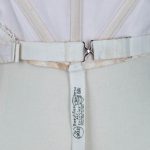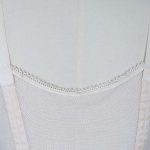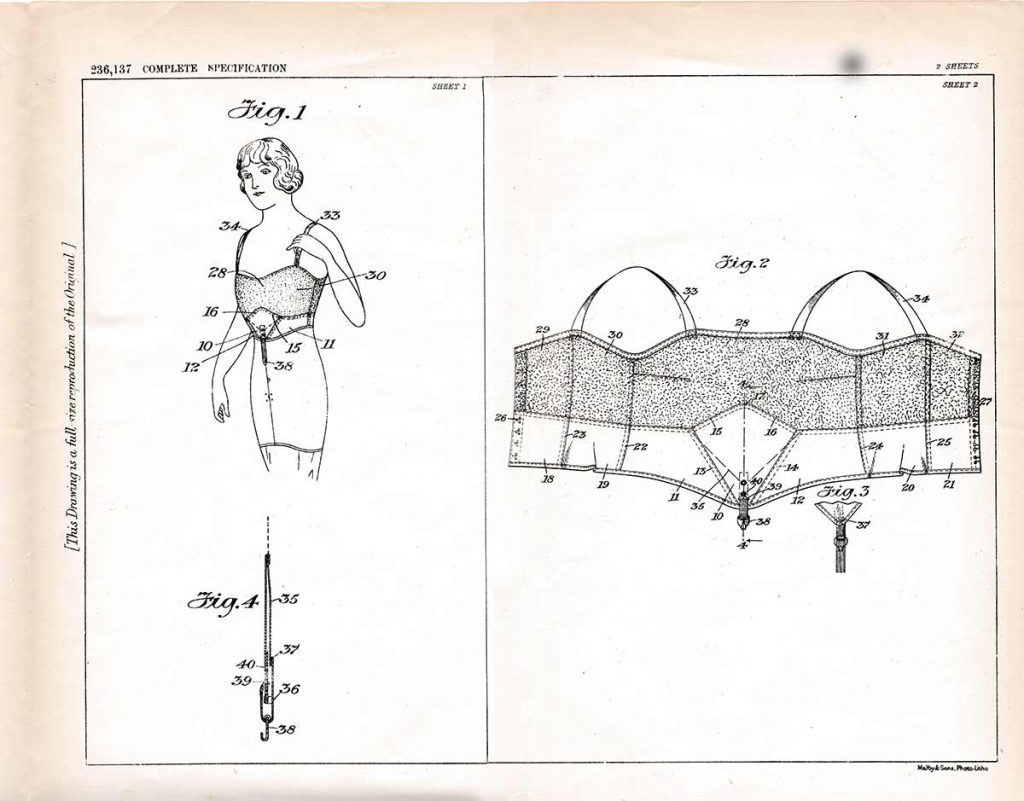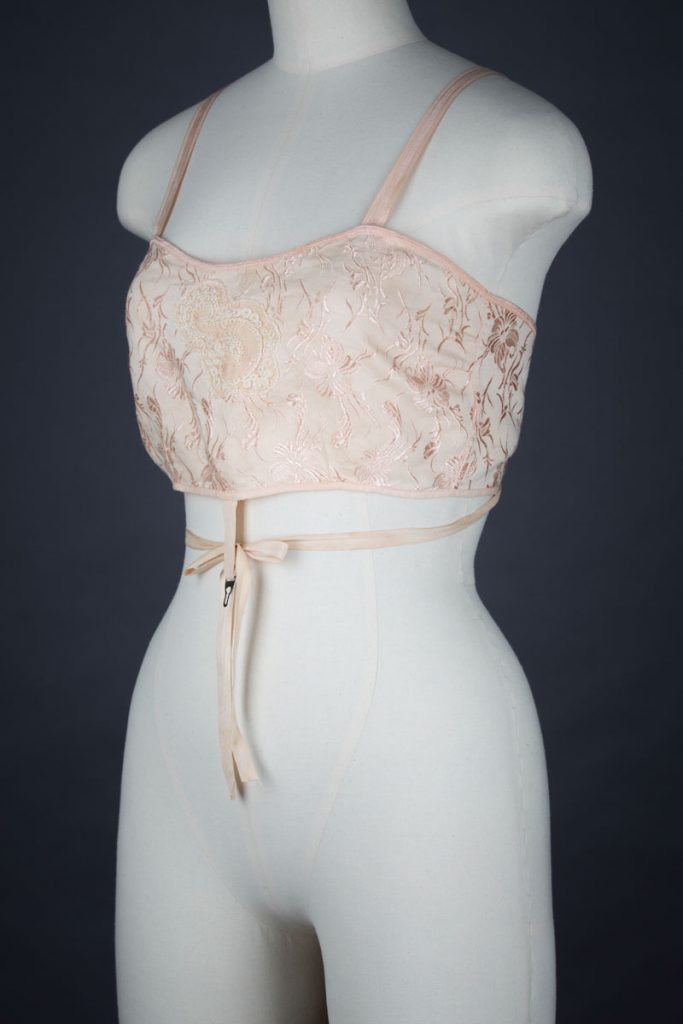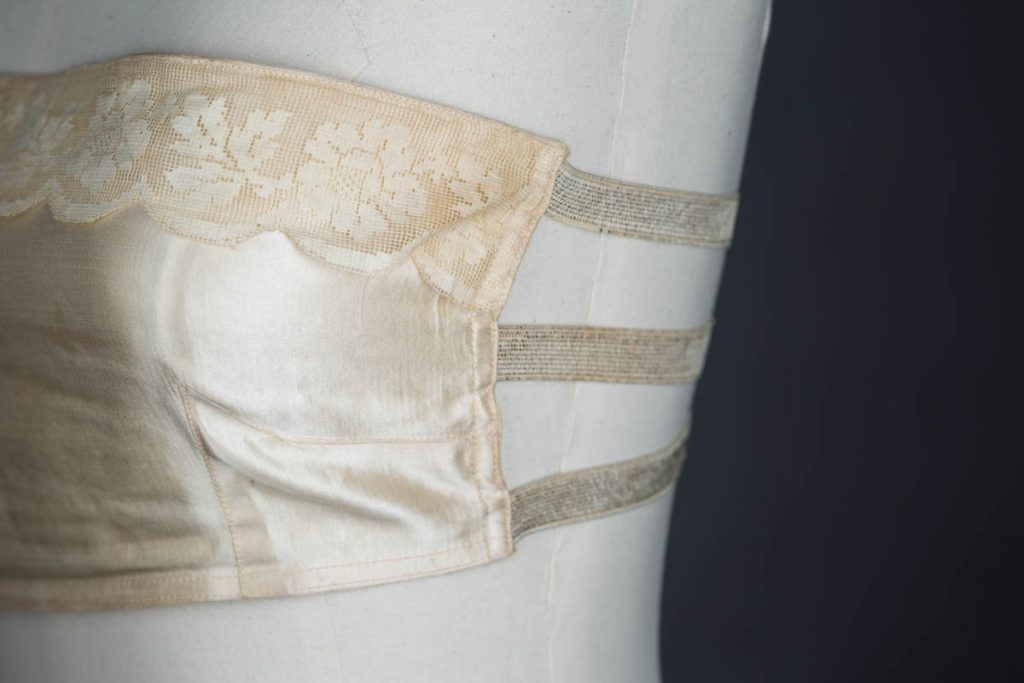The first manufactured fibres, developed from cellulose in the late nineteenth century, became extremely important to manufacturers of women’s underwear, offering a much cheaper alternative to pure silk. Originally known as artificial silk or ‘art silk’, viscose was used in the production of underwear extensively in the 20s and became known as rayon in 1925. Bra wearers would have been very aware of these new fibres because the chemical companies advertised to end consumers as well as fabric and clothing manufacturers. They encouraged consumers to believe that rayon was not an inferior replica of silk, but a desirable fabric in its own right.
Farrell-Beck and Gau report that, at this time, manufacturers who were used to producing corsets now had to not only cope with new designs but also working with lighter lingerie fabrics. ‘Manufacturers such as Kops Brothers, who had worked exclusively with heavy materials, scrambled to adjust machinery and production methods to accommodate sheer textiles, laces, and ribbons.’ A fashionably active lifestyle meant that your undergarments would be required to move and stretch with you, so elastic began to be introduced to the backs of bras. Many patents were registered in the US at this time for innovative smoothing, supportive and, towards the end of the 20s, uplifting styles.
